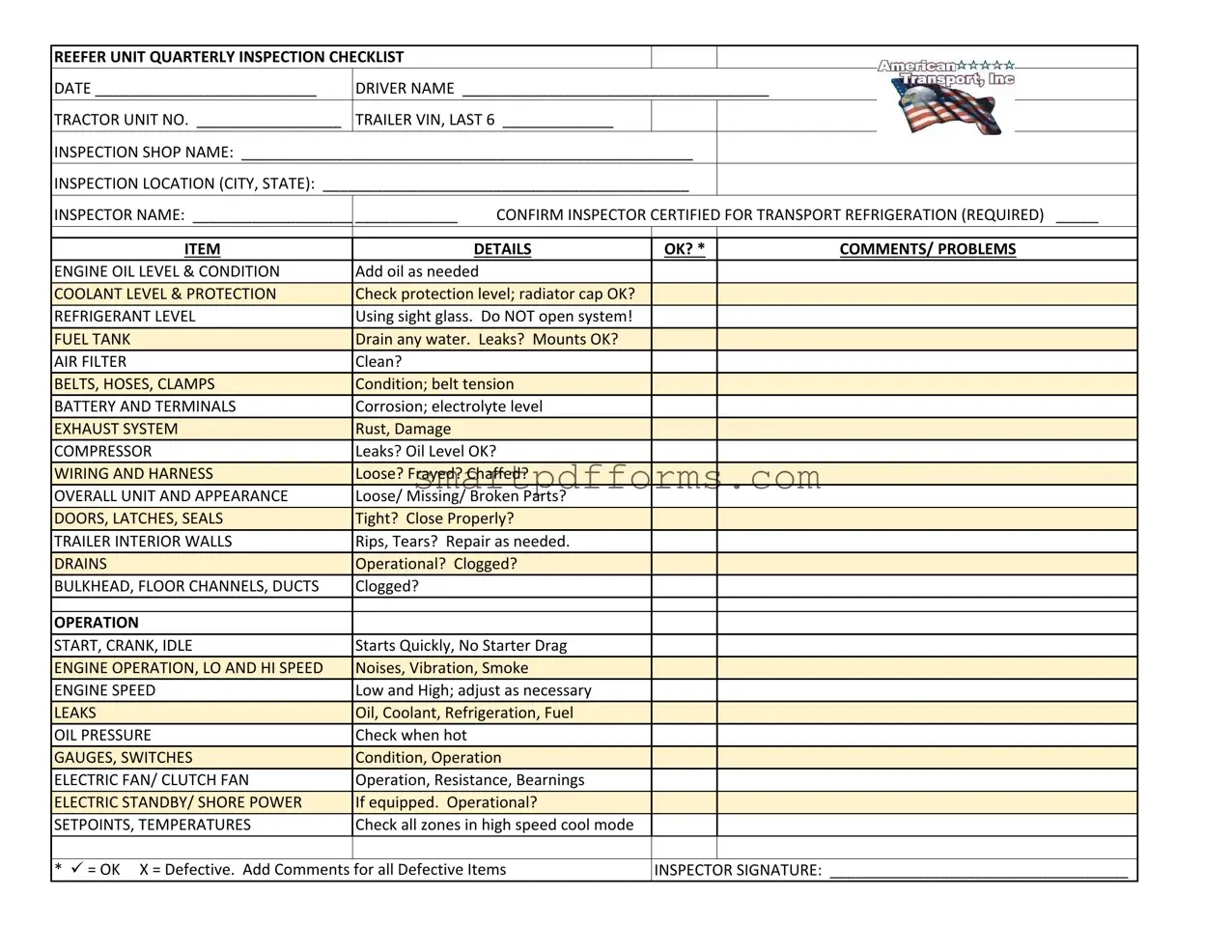In the constantly evolving landscape of commercial transportation, the integrity of refrigerated cargo is paramount, necessitating rigorous inspection protocols to ensure perishables reach their destinations in optimal condition. The Reefer Inspection form plays a critical role in this process, serving as a comprehensive checklist to assess the operational readiness of refrigerated units on a quarterly basis. Detailed within the form are sections for recording the date, driver's name, tractor and trailer identification, along with the inspection location and the inspector’s credentials, verifying their qualification for assessing transport refrigeration units. It meticulously covers the inspection of key components such as engine oil and coolant levels, refrigerant levels, fuel tanks, and the cleanliness and condition of air filters. Additionally, it evaluates the structural and functional integrity of belts, hoses, clamps, battery terminals, the exhaust system, and compressor, while also scrutinizing the wiring, harness, unit appearance, and interior condition of the trailer. The checklist extends to operational aspects like the response of doors, latches, seals, the trailer’s interior walls, drains, and the performance of the engine across various parameters. Notably, the form requires inspectors to note the condition of items, marking them as satisfactory or flagging defects with comments, ensuring a thorough audit of the unit’s ability to maintain specified temperature setpoints crucial for the safe transport of perishable goods. This structured approach not only enhances safety and compliance but also underpins the logistics sector's commitment to delivering quality.

